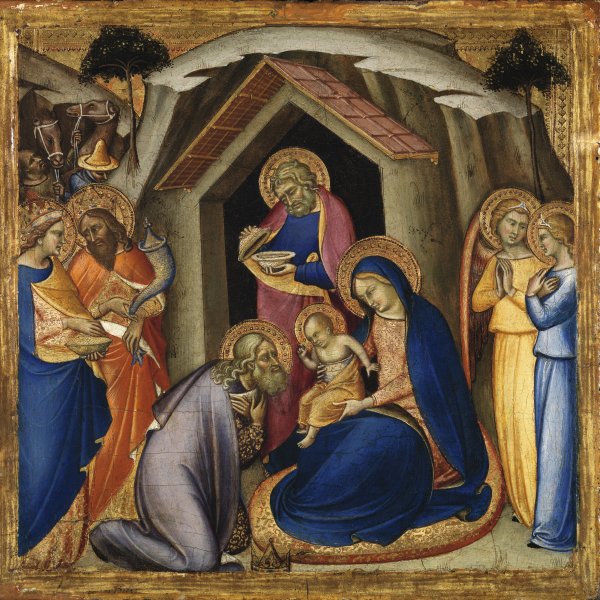Luca di Tommè
Luca di Tommè belonged to a generation of painters that assimilated the lessons of Duccio and made a significant contribution to the development of the Sienese style and its continuation into the 15th century. In addition he developed the innovations first introduced by Simone Martini and Pietro and Ambrogio Lorenzetti. Around fifty works have been attributed to Luca di Tommè, most of them altarpieces. A prosperous citizen of Siena, by 1356 he was already established and documented as a member of the painters’ guild in that city. Luca di Tommè was a prolific painter with an important workshop and was highly respected by his contemporaries. Most of his professional career was spent in Siena, although he also undertook commissions in other areas of Tuscany such as Orvieto.
His earliest works lack the individuality of his later paintings but are generally noted for the way in which the figures relate to the backgrounds, for example, The Virgin and Child enthroned with Saint Louis of Toulouse and Saint Michael (Los Angeles County Museum of Art). His ability to expression emotions through his figures is evident in The Flagellation (Rijksmuseum, Amsterdam). Luca di Tommè collaborated with various artists, most notably Niccolò di Ser Sozzo, with whom he painted the polyptych of the Virgin and Child enthroned with Saint John the Baptist, Saint Thomas and Saint Stephe (Pinacoteca Nazionale, Siena). From the 1360s he abandoned his use of soft modelling and sinuous outlines and developed a more static style that resulted in a greater sense of solemnity in his work. Among Luca di Tommè’s last paintings is The Annunciation with Saints (Oratory of San Giovanni in Cascina).





